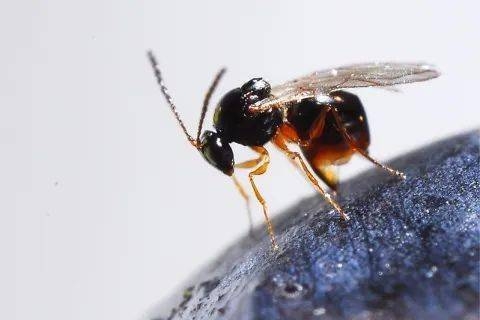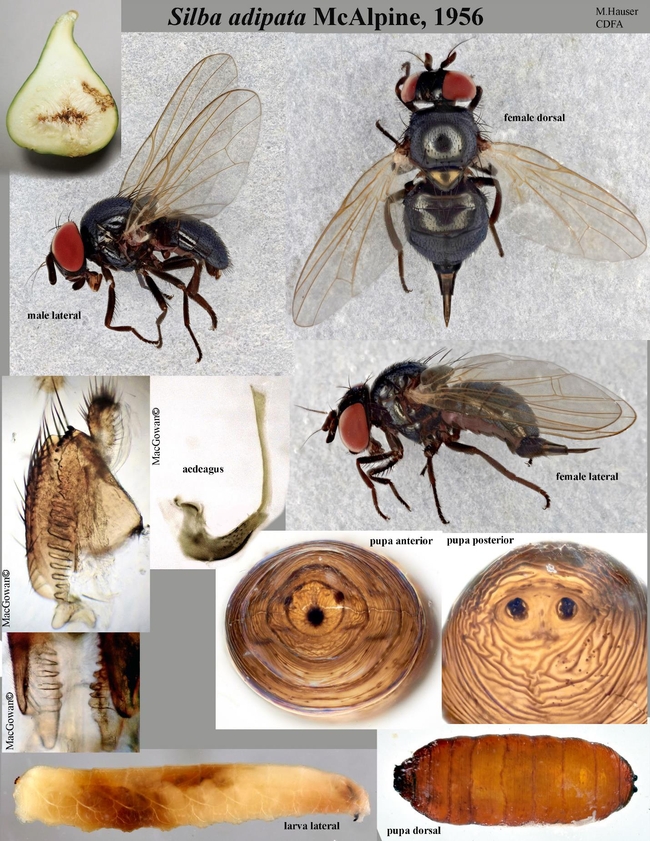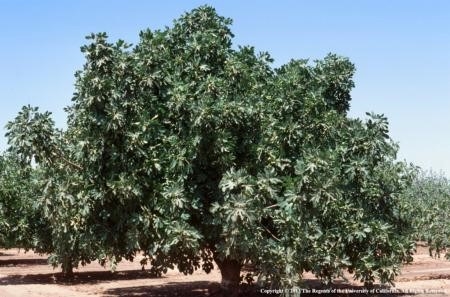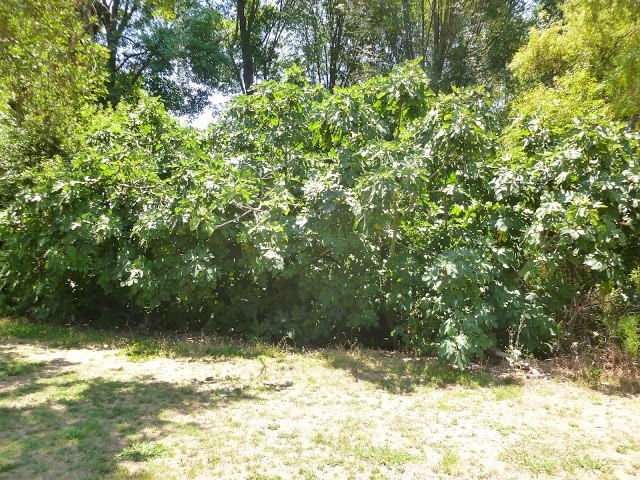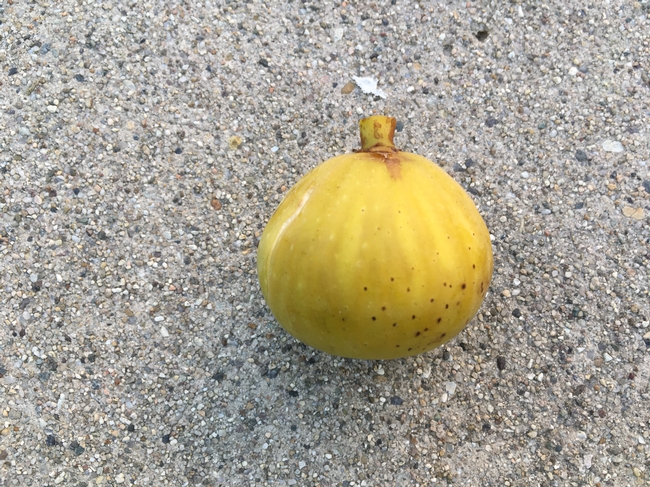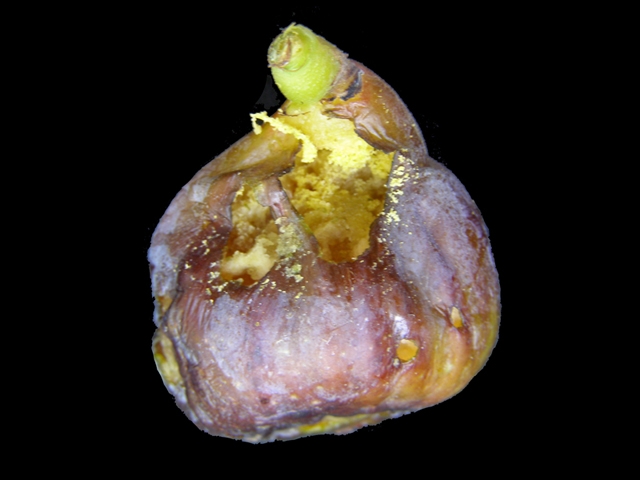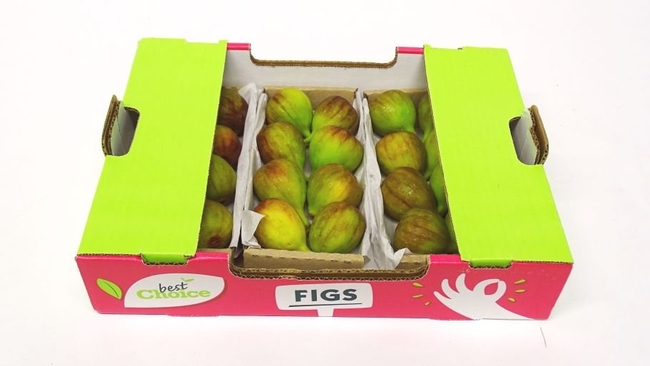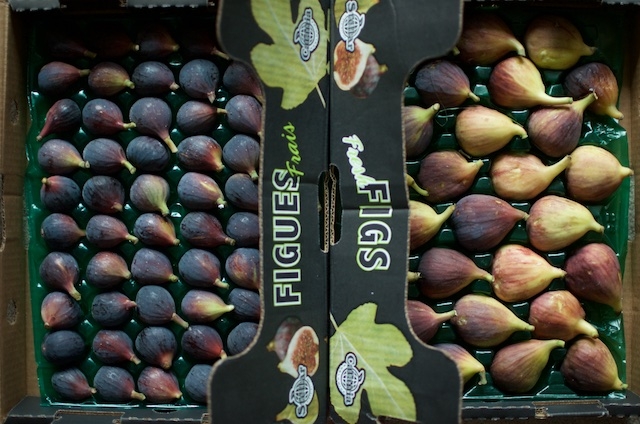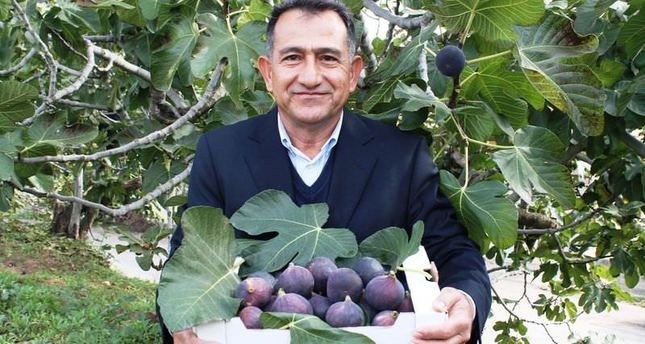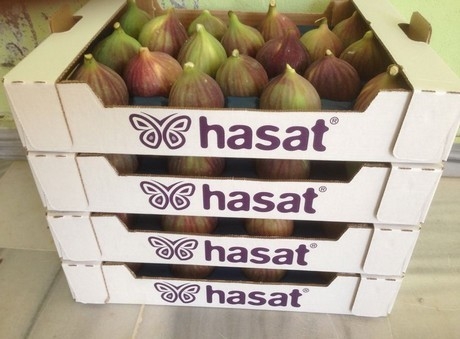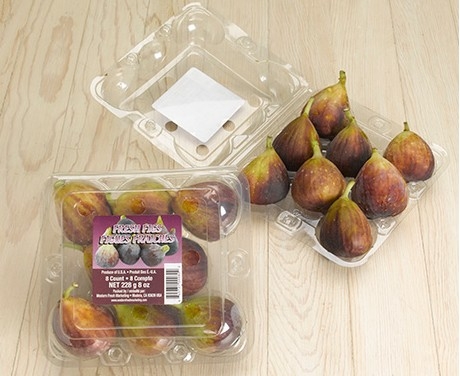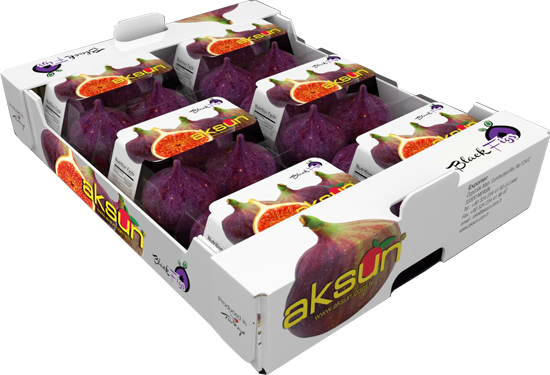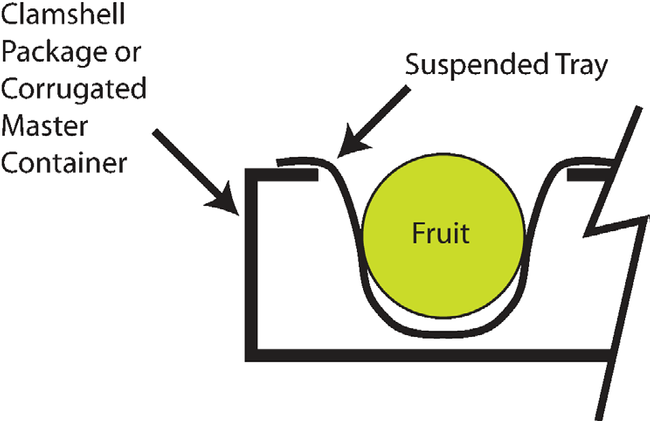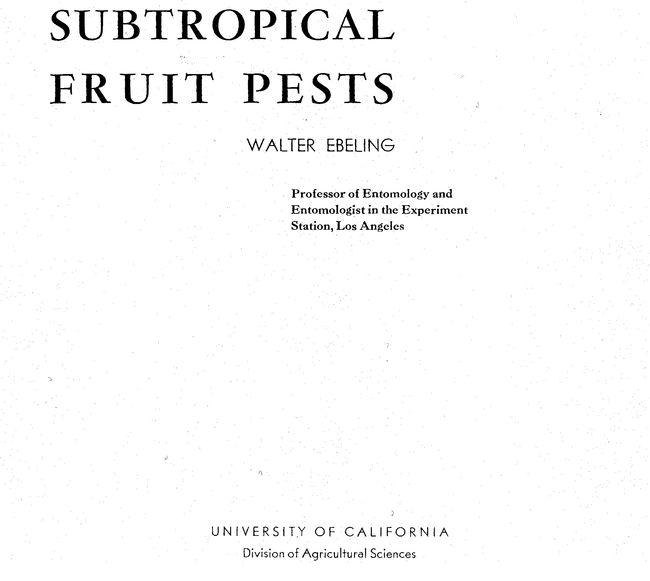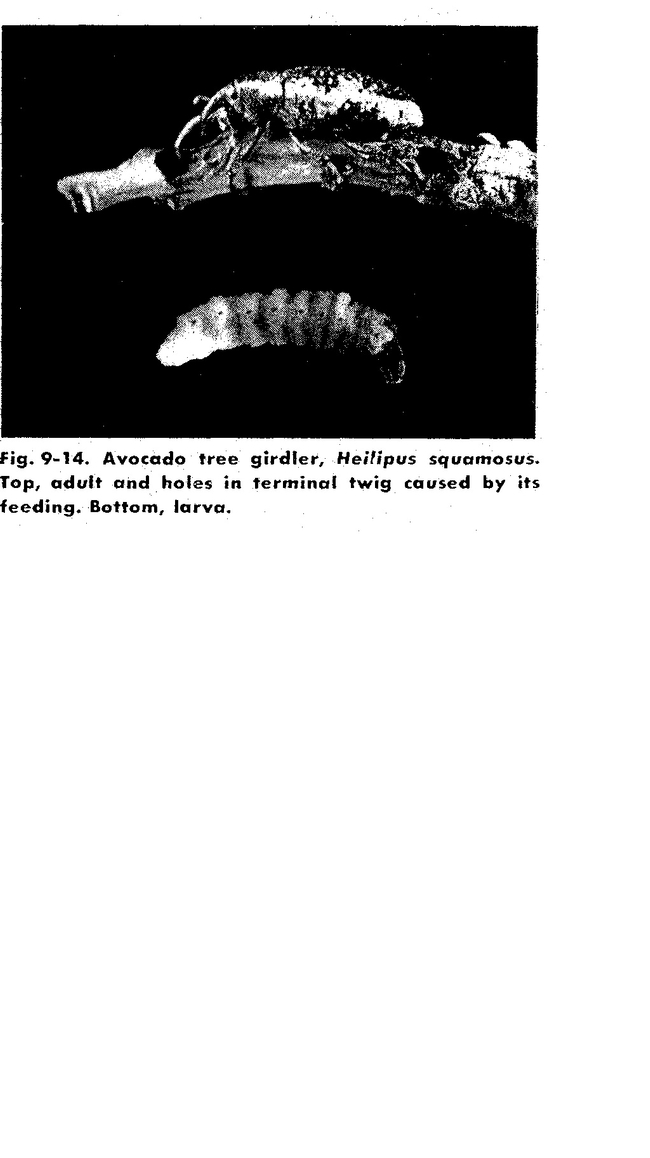
Posts Tagged: fig
Beneficial Wasp Coming Our Way?
Kym Pokorny - Oregon State University
Destructive Pest of Cherry, Grapes, Peaches, Blueberry, Fig and
Lots of Other Fruit
to Come Under Wasp Control?
Corvallis, Ore., June 6, 2022– After 12 years of research, a parasitic wasp that controls a highly destructive fruit fly will be released by Oregon State University agricultural scientists in June.
Vaughn Walton, Extension entomologist and professor in the College of Agricultural Sciences, said the U.S. Department of Agriculture has permitted release of the wasp (Ganaspis brasiliensis), a slow process that took more than 10 years from application to decision. Now that it has a permit, Walton's lab, which is part of the OSU Agricultural Experiment Station, is raising enough wasps to make a dent in the spotted wing drosophila (SWD, Drosophila Suzuki) population in Oregon.
“This will have a huge impact,” Walton said. “Spotted wing drosophila is very difficult to control. It's got a very, very high reproduction rate with many generations per year. Because of that, when using pesticides, they have to be applied constantly, sometimes two or three times a week. Growers are really interested and are excited about a biological control that will work along with cultural management tools to decrease SWD and not cost them any money. It's a natural resource available to them. We think this is going to change things.”
A holistic integrated pest management (IPM) approach that uses cultural controls like good sanitation, proper pruning, drip irrigation and weed cloth can be somewhat effective. But IPM management programs still need the addition of pesticides to fight spotted wing drosophila, Walton said.
Spotted wing drosophila, a tiny fruit fly that resembles those that hover over rotting fruit in summer, is well suited to the Willamette Valley climate. About 95% live in areas surrounding non-crop habitats that act as pest reservoirs for reinvasion of the crops. That's where the wasp will be released.
The adult female fly lays her eggs — up to 600 per year — within ripening fruit, said Ryan Chave, a graduate student who works with Walton. When the larvae emerge, they burrow in and start eating the fruit from the inside out, causing damage that results in severe crop losses.
The parasitoid wasp kills SWD by laying eggs inside the insect and when the wasp hatches, its larva consumes its prey, Chave said. Spotted wing drosophila populations can be kept at a bay at a rate of up to 65% when the parasitoid wasp is there to check it, according to preliminary data.
“We'll never take down the entire fly population,” Walton said. “But as SWD increases there's more food for the wasp. In the field if you have a bunch of SWD attack a crop and reproduce, as they increase there it gets larger and larger.”
Though not native to Oregon, a few of the parasitoid wasps were found in Oregon and allowed the researchers an opportunity to study them in the field. They're confident it will not become an invasive pest problem since G. brasiliensis is a specialist — in other words it only feeds on SWD, said Walton, who worked closely with Jana Lee of the Oregon Department of Agriculture. He also collaborated with colleagues at University of California, Berkeley. Walton has studied another Asian wasp (Pachycrepoideus vindemmiae) that has promise but not as much as G. brasiliensis because it's a generalist and will kill other insects in addition to spotted wing drosophila.
G. brasiliensis image: Dr. Kent Daane (University of California, Berkeley)
New Pest on Figs
The following is a pest rating proposal by Kyle Beucke (CDFA)” with some photographs by Martin Hauser (CDFA) and Iain MacGowan:
On June 10, 2021, a resident in Pasadena (Los Angeles County) submitted a fig with pupae to county agricultural personnel. The pupae were confirmed as Silba adipata with molecular techniques. On June 21, 2021, a resident in Goleta (Santa Barbara County) submitted figs with larvae to county agricultural personnel. These were also confirmed as S. adipata with molecular techniques. On June 24, 2021, a larva from a fig at the Goleta residence was collected by state (CDFA) personnel and this was confirmed as S. adipata with molecular techniques. On June 29, 2021, an adult male was confirmed as S. adipata via morphology of the genitalia. Further finds of S. adipata were made in Orange and Ventura counties. Silba adipata was not previously known to be established in the New World and it has not been rated. Therefore, a pest rating proposal is needed.
History & Status:
Background: Adult Silba adipata are black shining flies 3.5-4.5 mm in length. Adults feed on exudates of figs and fig tree sap and possibly in flowers of other plants. Edible fig (Ficus carica) is the only known larval host, and both figs and caprifigs are attacked. Female flies oviposit groups of eggs under the scales of the ostiole of the fruit, and unripe fruits are reported to be preferred for oviposition. Oviposition is reported to primarily occur on figs that are in a shaded position. Adult activity is reported to be greatest early in the morning and late in the afternoon, when temperatures are lower. Larvae feed inside the fruit, and this often results in premature fruit drop. Larvae can complete development in dropped fruit, and they emerge from emergence holes approximately 1 mm in diameter to pupate in the soil (Abbes et al., 2021; Katsoyannos, 1983; M. Hauser, pers. comm.). There are reportedly 4-6 generations per year (Katsoyannos and Guerin, 1984). Adults are active in Turkey from May to November (Tutmus, 2013).
Infestations by S. adipata caused fruit drop in Slovenia, but impact varied by location and fig variety (Rote et al., 2017). In Tunisia, it caused “massive” fruit dropand infestation rates (% of fruits infested) exceeded 80% in some cases. All varieties of figs there were reported to be susceptible (Abbes et al., 2021).
Hexanol and ammonium sulfate (use together gives three-fold increase over either alone) are attractive when used in McPhail traps (Katsoyannos and Guerin, 1984). Tutmus(2013) reported attraction of these lures to be increased greatly by the addition of fig “milk” (presumably sap).Regarding control, Abbes et al. (2021) suggested bait sprays, mass trapping, netting the fruits, and burying dropped fruit to limit development of larvae as potential control techniques. The pesticide DelegateTM250 WG is labeled for control of S. adipata on figs in South Africa (Corteva).
Worldwide Distribution: Silba adipata is reported to be native to the Mediterranean region and the Middle East. Its distribution includes: Africa: Egypt, South Africa (introduced), Tunisia; Asia: Israel, Syria, Turkey; Europe: Italy, Malta, Slovenia (introduced); North America: United States (California) (Abbes et al., 2021; D'Antonio and Fimiani, 1988; Giliomee, 2011; MacGowan and Freidberg, 2008; Mifsud et al., 2012; Rot et al., 2017; Tutmus, 2013). It was found in Morelos, Mexico in March 2020, but the status of this eradication is not known (United States Department of Agriculture).
Black Fly Damage
Black Fly Life Stages
References:
Abbes, K., Hafsi, A., Harbi, A., Mars, M., and Chermiti, B. 2021. The black fig fly Silba adipata (Diptera: Lonchaeidae) as an emerging pest in Tunisia: preliminary data on geographic distribution, bioecology and damage. Phytoparasitica. https://doi.org/10.1007/s12600-020-00871-y
Corteva. Accessed July 2, 2021: https://www.corteva.co.za/content/dam/dpagco/corteva/za/za/en/products/files/DELEGATE_ 250_WG_2020-02-05.pdf
D'Antonio, C. and Fimiani, P. 1988. Approccio ad un inventario entomofaunistico Dell'Isola di Vivara (NA). Noto preliminare. (1° contributo). Annuario del Museo Zoologico della Università di Napoli 26:155-170.
Giliomee, J. H. 2011. Recent establishment of many alien insects in South Africa –a cause for concern. African Entomology 19:151-155.
Katsoyannos, B. I. 1983. Field observations on the biology and behavior of the black fig fly Silba adipata McAlpine (Diptera, Lonchaeidae), and trapping experiments. Zeitschrift für Angewandte Entomologie 95:471-476
Katsoyannos, B. I. and Guerin, P. M. 1984. Hexanol: a potent attractant for the black fly, Silba adipata. Entomologia Experimentalis et Applicata 35:71-74.
MacGowan, I. and Freidberg, A. 2008. The Lonchaeidae (Diptera) of Israel, with descriptions of three new species. Israel Journal of Entomology 38:61-92.
Mifsud, D., Falzon, A., Malumphy, C., de Lillo, E., Vovlas, N., and Porcelli, F. 2012. On some arthropods associated with Ficus species (Moraceae) in the Maltese Islands. Bulletin of the Entomological Society of Malta 5:5-34.
Rot, M., Žežlina, I., Jancar, M., and Seljak, G. 2017. Crna figova muha (Silba adipata McAlpine, 1956 [Diptera, Lonchaeidae]) je zastopana tudi v Sloveniji. Zbornik predavanj in referatov 13:47-52.
Tutmus, E. 2013. Determination of distribution, population fluctuations and damage density of Silba adipata McAlpine (=Lonchaea aristella Becker) (Diptera: Lonchaeidae_ in fig orchards in Aydin. Master'sthesis, Adnan Menderes University, Aydin, Turkey. Accessed June 30, 2021: http://adudspace.adu.edu.tr:8080/xmlui/handle/11607/643
United States Department of Agriculture. APHIS Amends Import Requirements for Fresh Fig (Ficus carica) Fruit from Mexico. Accessed June 29, 2021: https://www.aphis.usda.gov/import_export/plants/plant_imports/federal_order/downloads/2 020/DA-2020-19.pdf
READ the CDFA Alert: https://blogs.cdfa.ca.gov/Section3162/wp-content/uploads/2021/07/Silba-adipata.pdf
Why Would You Want to Kill a Fig Tree?
This is the adventure of a livestock advisor trying to find a way to kill a fig tree. Normally we are doing our best to make fruit trees grow. In this case, Rebecca Ozeran had to find the best way to kill figs that were fouling the range. Her solution is not applicable to fruit tree growers in California. Triclopyr is not registered for edible fruit tree crops in CA. So, don't try this at home. There are other ways of doing it.
Mention of any pesticide in this message is not a recommendation.
Why a Livestock Advisor learned about fig trees
by Rebecca Ozeran
Livestock and Natural Resources Advisor
UCCE Fresno County
As a livestock and natural resources advisor, I don't expect to get questions about fruit trees such as figs. As it turns out, I recently needed to know just enough about figs to provide information on how to kill them - a west Fresno County landowner contacted me to ask how he could get rid of some fig trees that were threatening his belowground water pipelines.
Before writing this post, I did my due diligence and confirmed that no one has already discussed fig trees as the target of weed control on this blog. The only mentions of fig trees in the UC Weed Science blog history are a listing of approved herbicides to control weeds in California subtropical crops as of 2 years ago1 and a mention that fig was one of several crops undergoing residue trials last summer2. Triclopyr is, interestingly, not on the list of approved herbicides. (This will be important later.)
Now that we've established this, we have to ask: Why and how are we getting figs on rangelands in Fresno County? And why does it matter?
Figure 1. Mature fig trees in an orchard.
For starters, Fresno County used to have several thousand acres of cultivated figs (nearly 13,000 ac in 19663, but less than 7,500 ac as of 20164), so there are many places in the county where volunteer figs can be seen sprouting, including in newer subdivisions where fig orchards used to be, e.g. the "Fig Garden" region of the city of Fresno. Landowners also may have decided to plant figs on their rural properties as a source of fresh fruit and/or shade, and once established, the figs were able to reproduce and spread. Although fig populations seem to grow slowly in new areas, figs have invaded riparian and other natural areas throughout California's Central Valley5 and can be tough to control once established.
Of course, if fig didn't cause any problems where it grew in these natural areas, we wouldn't be talking about it today. Unfortunately, fig is capable of displacing native plants and forming thick clusters of fig where nothing else can grow5, often in riparian areas. This is problematic for livestock owners, since grazing animals don't find fully grown fig trees appetizing. This can also be bad news for the biodiversity found in riparian areas, as figs become a monoculture. In addition, fig tree clusters decrease ground cover from litter (fallen leaves, grass stems, etc.) which means the fig-dominated areas have more bare soil than grassy or shrubby areas.
Figure 2. Weedy figs create dense stands that exclude other vegetation.
Trees also tend to evapotranspire more water than herbaceous plants like grasses, so they can actually take more water from stream systems and lower stream water levels6. The combination of lower water levels and higher potential for soil erosion can then cause trouble for water quality, and especially for aquatic animals who may require certain water temperatures, clarity, or depth to survive. Lastly, there is the threat fig roots pose to water infrastructure (pipelines) as seen by the landowner who contacted me in the first place.
Hopefully at least one of those consequences helped to illustrate why someone might consider fig a weed. Fortunately for me, several Weed Workgroup members provided great information when I reached out for advice. Mechanical treatments are impractical, as fig can create new sprouts from cut stumps, stems, and roots, and repeated treatments are not always feasible. Applying glyphosate alone to the leaves is ineffective; more effective are cut stump or basal bark applications of various herbicides, including combinations listed in the informative Weed Control in Natural Areas7. Based on the book, very little is known about the efficacy of many herbicide treatments on fig itself, and treatment recommendations are based on their use in other species. Only triclopyr (told you it would be important) has been tested explicitly on fig. Triclopyr is particularly effective when applied as a basal bark treatment. A great resource explaining basal bark treatment can be found below8.

Figure 3. Tree receiving basal bark herbicide treatment.
A non-UC member of the workgroup, Dr. Kerri Steenworth of USDA-ARS, referred me to Dr. Katherine Holmes, a restoration ecologist who is currently Assistant Executive Director of Solano County RCD and Chair of Solano County Weed Management Area. Dr. Holmes has investigated riparian and rangeland restoration connected to fig tree invasion in California's Central Valley5,9,10. When I spoke with Dr. Holmes, she confirmed that triclopyr basal bark treatments have been the most effective in her experience. She has never attempted stem injection or cut stump application on figs but hypothesizes that the strong sap flow would likely reduce the effectiveness of injected herbicide, and that the root system of cut and treated stumps may still be able to create new stems. Dr. Holmes suggested coating the basal 6 to 8 inches of the fig trunk with a mixture of 75% Hasten (surfactant) and 25% Garlon 4 (triclopyr), as long as the tree wasn't in or near water. Basal bark treatments require that the tree is still alive for enough time for the herbicide to be distributed through the vascular system.
In sum, fig trees are a weed issue I never imagined, but fortunately there seems to be an effective solution. More research on treating this species as a weed could be valuable, as fig production is in decline in Fresno County and fig invasion may continue in natural areas. For now, we at least have one blog post about controlling weedy fig trees.
References:
- Weed Control in Subtropical Tree Crops. //ucanr.edu/blogs/ucdweedscience/blogfiles/32828.pdf
- Treevix Labeled for Use in California Pomegranates. //ucanr.edu/blogs/blogcore/postdetail.cfm?postnum=21326
- 1966 Fresno County Crop Report. Available at http://www.co.fresno.ca.us/departments/agricultural-commissioner/crop-report-history.
- 2016 Fresno County Crop Report. Available at http://www.co.fresno.ca.us/departments/agricultural-commissioner/crop-report-history.
- Holmes, K. 2008. Invasive fig trees (Ficus carica) in the riparian forests of California's Central Valley: population growth, community impacts, and eradication efforts [dissertation]. Available at https://search.proquest.com/docview/304698102/previewPDF/7D691548E68B4426PQ/1?accountid=14515
- Hibbert, A. R. 1983. Water yield improvement potential by vegetation management on western rangelands. Water Resourves Bulletin 19: 375-381.
- DiTomaso, J.M., G. B. Kyser, S. R. Oneto, R. G. Wilson, S. B. Orloff, L. W. Anderson, S. D. Wright, J. A. Roncoroni, T. L. Miller, T. S. Prather, and C. Ransom. 2013. Weed Control in Natural Areas in the Western United States.
- Enloe, S., N. Loewenstein, W. Kelley, and A. Brodbeck. 2010. Basal bark herbicide treatment for invasive plants in pastures, natural areas, and forests. Alabama Cooperative Extension System, Agronomy and Soils Series. http://www.aces.edu/timelyinfo/Ag%20Soil/2010/December/Dec_2010.pdf
- Holmes, K. A. and A. M. Berry. 2009. Evaluation of off-target effects due to basal bark treatment for control of invasive fig trees (Ficus carica). Invasive Plant Science and Management 2:345-351.
- Holmes, K. A., S. E. Greco, and A. M. Berry. 2014. Pattern and process of fig (Ficus carica) invasion in a California riparian forest. Invasive Plant Science and Management 7:46-58.
Figures:
- Retrieved from https://ucanr.edu/repository/fileimage.cfm?article=99170&p=HVFBYB
- Retrieved from http://figs4funforum.websitetoolbox.com/post/took-some-pictures-of-the-fig-forest-5952568.
- (C) David R. Jackson and Penn State Extension. Retrieved from https://extension.psu.edu/using-basal-bark-herbicide-applications-to-control-understory-tree-species.

fig fruit
What's More Delicate than an Egg?
A fig. A yellow fig. A most delicious 'Kadota' fig. A piece of fruit that falls apart easily and shows every nick, scrape and bump.
And it doesn't take much to reduce a fig to something that is not very attractive to a consumer.
There have been all manner of packing materials that have been devised for shipping fresh figs. Nestled in individual packing hollows they can be shipped to arrive in pretty good condition.
'Bursa Black" which is a 1/4 pound fig grown in the Bursa region of Turkey is shipped to large cities in Europe and because of careful fruit selection and packaging, arrives in excellent shape at the delivery point
Some of these shipping containers pack for individual display, making it easy for the seller to keep from damaging the fruit when removed from the container.
The ultimate shipping container that has been developed for delicate fruit is a "suspended tray" container which floats the fruit to its destination. It's somewhat pricey, so the value of the fruit will determine its value to the shipper. A description of the tray using pears and avocados follows:
SUSPENDED TRAY PACKAGE FOR PROTECTING
SOFT FRUIT FROM MECHANICAL DAMAGE
J. F. Thompson, D. C. Slaughter, M. L. Arpaia
Bartlett pears and Hass avocados are subject to transport vibration damage and their susceptibility to damage
increases as the fruit soften during ripening. Firm fruit,greater than 50 SIQ units (13-lb penetrometer firmness) for
pears and greater than 65 SIQ units (3.0-lb penetrometer firmness) for avocados, could be shipped in a wide variety of
conventional packages with little transit vibration damage.However softer fruit sustains significant transit vibration
damage when packed in conventional packaging systems and subjected to severe in-transit vibration conditions common to cross-country transit in the United States. This study demonstrated that softer fruit was protected from transit vibration damage when packed in a suspended tray packaging system. The study showed that even eating-ripefruit could be shipped in the suspended tray system with transit vibration damage not significantly greater than nonvibrated control fruit.
http://ucce.ucdavis.edu/files/datastore/234-908.pdf
But hey, an egg carton may work just about as well.

figs in crate
Avocado Pest Resource from the Past
What a great find and it was there all along, just like a used book store can be a gold mine at times.
http://www.avocadosource.com/papers/research_articles/ebelingwalter1959b.pdf
This is the section of Subtropical Fruit Pests by Walter Ebeling that covers avocado pests in not only California, but what was and is known to exist in other avocado growing regions around the US and the world. It was reproduced at the Hoshi Foundation's Avocadosource website. At this point it only contains the chapters pertaining to avocado. Other chapters in the full text cover citrus, grape, walnut, almond pecan, olive, fig, date and other "Minor Subtropical Fruits". The beauty of the book is not only historical, but that it is still current (although the DDT recommendations are out of date) for many pests. It also chronicles pests that have appeared in the past, disappeared and then reappeared. An example is Avocado Bud Mite - here, gone, here and seemingly gone again, probably to reappear sometime in the future. This is no replacement for the UC-IPM website, http://ipm.ucanr.edu/PMG/crops-agriculture.html , but it is a good look at how the pest has been managed in the past and is done so currently.
I thought I had the only copy of this book in Ventura County, but you could too. There are some listed on ABE Books for cheap.
This pestiferous book was compiled by Walter Ebeling at UC Riverside/Los Angeles. He was of some note, considered the Father of Urban Entomology. As you can see from the descriptions of avocado pests, he was a good all round entomologist, as well. Urban entomology really forces you to know a lot because of the diversity of arthropods in urban settings. He passed in 2010 and was recognized world-wide for his work.
IN MEMORIAM
WALTER EBELING
Professor Emeritus of Entomology
UC Riverside
November 26, 1907 – December 17, 2010
Walter Ebeling, world-renowned entomologist and pioneer in the field of Urban Entomology, died 17 December 2010 in a care facility in Bandon, Oregon at the age of 103. "Professor Ebeling was a legendary research entomologist," said Dr. Michael Rust, Professor of Entomology at the University of California, Riverside, who replaced Dr. Ebeling upon his retirement in 1975. "He had tremendous abilities, tireless energy, and a passion for science. He was an expert in so many fields of entomology including agriculture, physiology, and insect behavior. Dr. Ebeling helped develop Urban Entomology into a respected independent area of research."
Read more of his Memoriam: http://senate.ucr.edu/agenda/120221/IN%20MEMORIAM-Walter%20Ebeling.pdf

